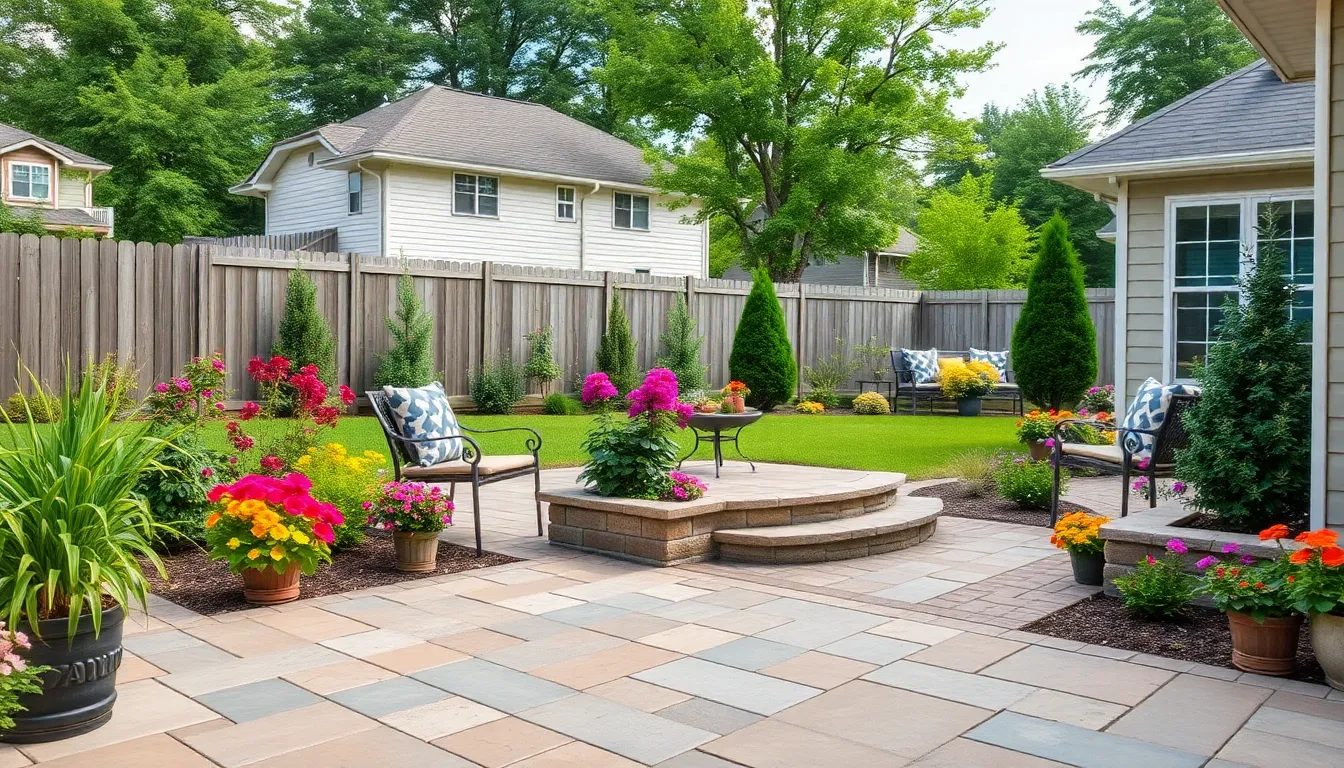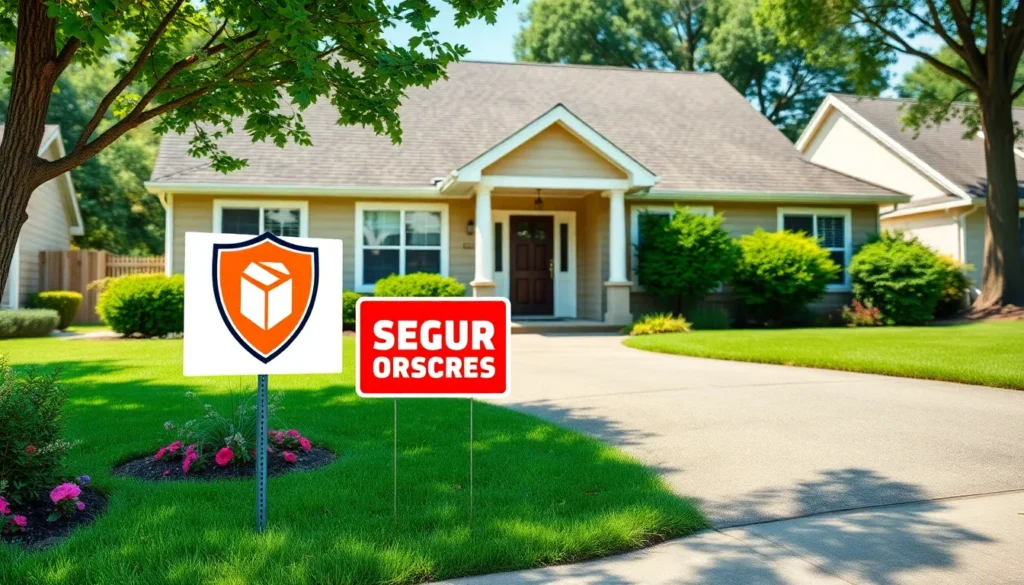Patios transform outdoor spaces into inviting retreats, perfect for relaxation and entertainment. With the right design, a patio can enhance a home’s aesthetic while providing a functional area for gatherings. Whether it’s a cozy nook for morning coffee or a spacious setting for summer barbecues, patios cater to various lifestyles and preferences.
Exploring different materials, layouts, and styles can inspire homeowners to create their dream patio. From classic brick to modern concrete, the options are endless. This article delves into the essential elements of patio design, helping readers understand how to maximize their outdoor living experience while adding value to their property.
Table of Contents
ToggleOverview of Patios
Patios serve as extensions of living spaces, providing functional areas for relaxation, dining, and entertaining. A well-constructed patio can enhance outdoor aesthetics, offering a seamless blend between nature and home. Various materials such as concrete, stone, brick, and tile are popular choices, each presenting unique benefits related to durability and style.
Designing a patio involves considering layout options like freeform, rectangular, or circular shapes. These layouts accommodate different activities, whether hosting large gatherings or small, intimate dinners. Additionally, various styles, including modern, rustic, or contemporary, cater to diverse tastes.
Patios not only offer aesthetic appeal but also increase property value. A thoughtfully designed outdoor space attracts potential buyers, showcasing a homeowner’s investment in their property. Proper maintenance and seasonal updates help preserve a patio’s condition, ensuring it remains a welcoming area throughout the year.
Types of Patios

Patios come in various styles and materials, each offering unique features and benefits. Homeowners should consider their aesthetic preferences and functional needs when choosing a patio type.
Concrete Patios
Concrete patios represent a versatile and cost-effective option. Homeowners can customize them with stains, patterns, and textures to match the home’s design. Concrete withstands harsh weather conditions, making it durable and long-lasting. It requires minimal maintenance, often needing only periodic cleaning. Add-ons like built-in seating or fire pits enhance functionality.
Paver Patios
Paver patios consist of individual stones or bricks, providing a customizable look. Homeowners can arrange pavers in various patterns and colors, offering endless design possibilities. Pavers allow for excellent drainage, reducing water pooling. They are also easy to repair; replacing a single paver is simple if damage occurs. This flexibility makes paver patios appealing for many homeowners.
Stone Patios
Stone patios incorporate natural materials, offering a classic and rustic appearance. They blend seamlessly with gardens and landscapes, enhancing the outdoor aesthetic. Different stone types, such as flagstone or slate, provide various colors and textures. Stone patios are durable but require proper installation to prevent shifting. Regular maintenance, such as sealing, keeps them looking pristine and extends their lifespan.
Design Considerations
Design considerations play a crucial role in creating an effective patio. Key aspects such as size, layout, materials, and textures impact both functionality and aesthetics.
Size and Layout
When determining size and layout, assess available outdoor space and intended use. A larger patio accommodates more furniture and activities, while a smaller, intimate design suits cozy gatherings. Popular layouts include freeform, rectangular, or circular configurations, which can cater to specific purposes like dining or lounging. The layout should allow for smooth traffic flow, ensuring easy access to other areas of the property. Incorporating features like pathways and defined zones contributes to an organized appearance and seamless integration with landscape elements.
Materials and Textures
Selecting materials and textures significantly influences a patio’s functional and visual qualities. Durable options such as concrete, stone, and pavers provide long-lasting performance while offering diverse aesthetics. For example, concrete can be stained or stamped for unique designs, while natural stone creates a rustic aesthetic. Pavers allow for innovative patterns and enhance drainage, making them suitable for varying climates. Textural contrasts between smooth, polished surfaces and rough, natural finishes add depth and interest, enhancing the overall ambiance of the patio. Prioritizing materials that complement the home’s architecture and surrounding landscape maximizes visual harmony.
Benefits of Having a Patio
Patios provide numerous benefits that enhance the overall enjoyment and functionality of outdoor spaces.
- Increased Living Space
Patios extend a home’s usable area, allowing for outdoor living and dining. They create a seamless flow from indoors to outdoors, perfect for entertaining guests or relaxing with family.
- Boosted Property Value
Patios significantly increase property values. Well-designed patios are attractive features for potential buyers, providing return on investment. Additional outdoor space appeals to those seeking more than just interior comfort.
- Enhanced Aesthetic Appeal
Patios improve the visual appeal of a property’s exterior. They offer opportunities for design personalization, integrating various materials, colors, and landscaping to complement the home’s architecture.
- Outdoor Entertaining Opportunities
Patios serve as ideal venues for gatherings. They facilitate outdoor grilling, dining, and leisure activities, creating inviting environments for socializing.
- Connection with Nature
Patios allow individuals to enjoy outdoor environments safely. They connect homeowners to nature, providing a space to relax while surrounded by greenery.
- Customization Options
Patios come with various material choices—concrete, pavers, stone, or tile. This flexibility enables homeowners to customize their patios according to style preferences and budget constraints.
- Low Maintenance
Patios typically require minimal upkeep when built with durable materials. Properly designed patios withstand weather conditions and reduce the need for frequent repairs or replacements.
- Enhanced Outdoor Activities
Patios create spaces for various outdoor activities, such as yoga, gardening, or family games. They encourage homeowners to utilize their yards actively, promoting healthy lifestyles.
- Year-Round Usability
Patios can be enjoyed in different seasons. Features like fire pits or patio heaters extend the usability during colder months, while shade structures enhance comfort in warmer weather.
Integrating a patio into a home’s design maximizes outdoor enjoyment, elevates aesthetic appeal, and promotes overall lifestyle enhancement.
Maintenance Tips for Patios
Regular maintenance keeps patios in top condition year-round. Homeowners can implement several effective strategies to extend the patio’s lifespan and maintain its visual appeal.
Cleaning
- Sweep debris: Regularly sweep away leaves, dirt, and other debris to prevent stains and discoloration.
- Use appropriate cleaners: For deeper cleaning, choose cleaners suitable for the patio material, like pH-neutral products for stone and concrete.
- Power wash: Periodically power washing removes stubborn stains and grime, ensuring a fresh look.
Sealing
- Seal surfaces: Applying a sealant protects materials like pavers and stone from moisture and stains.
- Inspect regularly: Check the sealant’s integrity annually; reapply as needed to maintain effectiveness.
Repair
- Address cracks: Fill any cracks or chips promptly to prevent further damage and maintain safety.
- Replace damaged stones: For paver patios, replace any loose or broken stones to ensure structural integrity.
Seasonal Preparations
- Prepare for winter: Remove any furniture and cover or store items during winter months to protect from harsh weather.
- Check drainage: Inspect drainage systems before heavy rains to prevent pooling and damage.
Landscaping
- Trim surrounding plants: Maintain plants around the patio to prevent overgrowth that can damage surfaces.
- Add mulch: Using mulch in flower beds can help keep weeds at bay and enhance the patio’s visual appeal.
Implementing these maintenance tips ensures that patios remain inviting and functional spaces for outdoor enjoyment.
Patios are more than just outdoor spaces; they’re essential extensions of a home that enhance both functionality and aesthetic appeal. By thoughtfully designing a patio with the right materials and layout, homeowners can create inviting areas for relaxation and entertainment. These outdoor havens not only increase property value but also foster a deeper connection with nature.
Regular maintenance and seasonal updates keep patios in excellent shape, ensuring they remain enjoyable year-round. With various styles and features to choose from, each patio can reflect personal taste while serving as a perfect venue for gatherings. Ultimately, investing in a well-designed patio enriches outdoor living experiences and contributes to a vibrant lifestyle.


